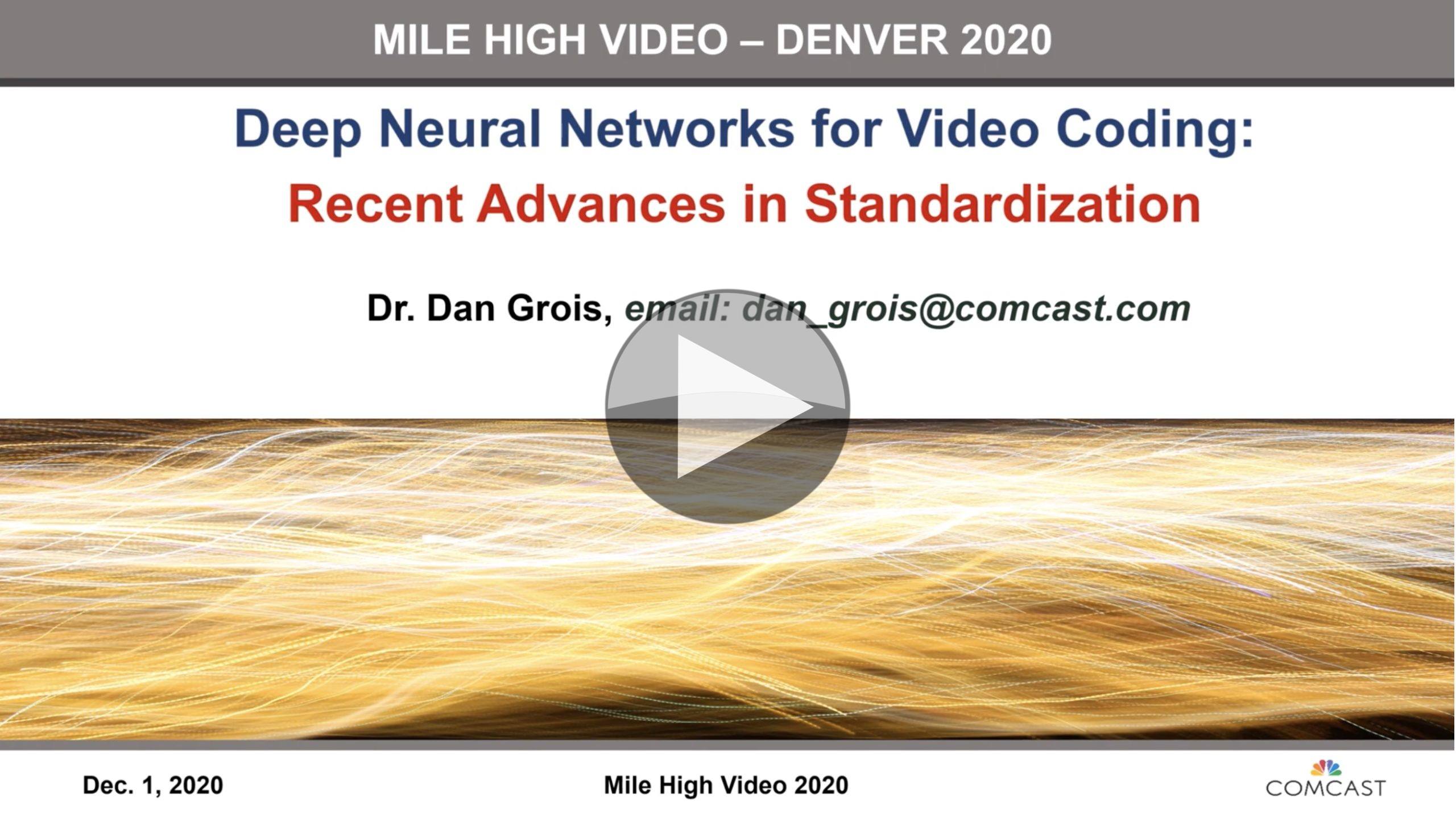We know AI is going to stick around. Whether it’s AI, Machine Learning, Deep Learning or by another name, it all stacks up to the same thing: we’re breaking away from fixed algorithms where one equation ‘does it all’ to a much more nuanced approached with a better result. This is true across all industries. Within the Broadcast industry, one way it can be used is in video and audio compression. Want to make an image smaller? Downsample it with a Convolutional Neural Network and it will look better than Lanczos. No surprise, then, that this is coming in full force to a compression technology near you.
In this talk from Comcast’s Dan Grois, we hear the ongoing work to super-charge the recently released VVC by replacing functional blocks with neural-networks-based technologies. VVC has already achieved 40-50% improvements over HEVC. From the work Dan’s involved with, we hear that more gains are looking promising by using neural networks.
Dan explains that deep neural networks recognise images in layers. The brain does the same thing having one area sensitive to lines and edges, another to objects, another part of the brain to faces etc. A Deep Neural Network works in a similar way.
During the development of VVC, Dan explains, neural network techniques were considered but deemed too memory- or computationally-intensive. Now, 6 years on from the inception of VVC, these techniques are now practical and are likely to result in a VVC version 2 with further compression improvements.
Dan enumerates the tests so far swapping out each of the functional blocks in turn: intra- and inter-frame prediction, up- and down-scaling, in-loop filtering etc. He even shows what it would look like in the encoder. Some blocks show improvements of less than 5%, but added together, there are significant gains to be had and whilst this update to VVC is still in the early stages, it seems clear that it will provide real benefits for those that can implement these improvements which, Dan highlights at the end, are likely to require more memory and computation than the current version VVC. For some, this will be well worth the savings.
Watch now!
Speaker
 |
Dan Grois Principal Researcher, Comcast |


